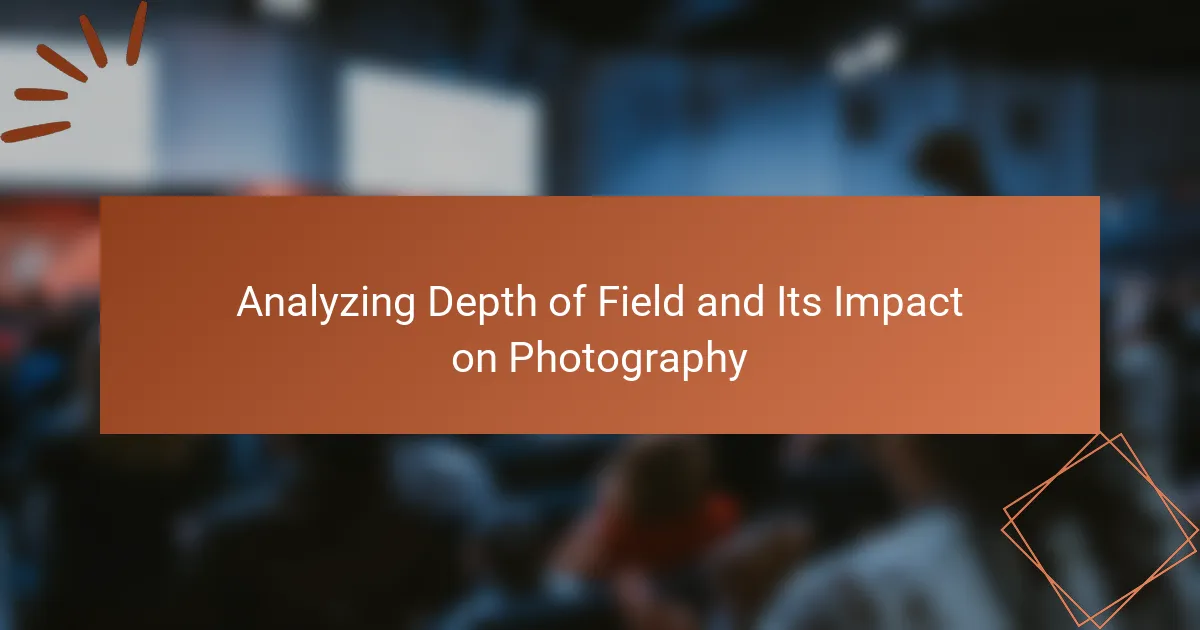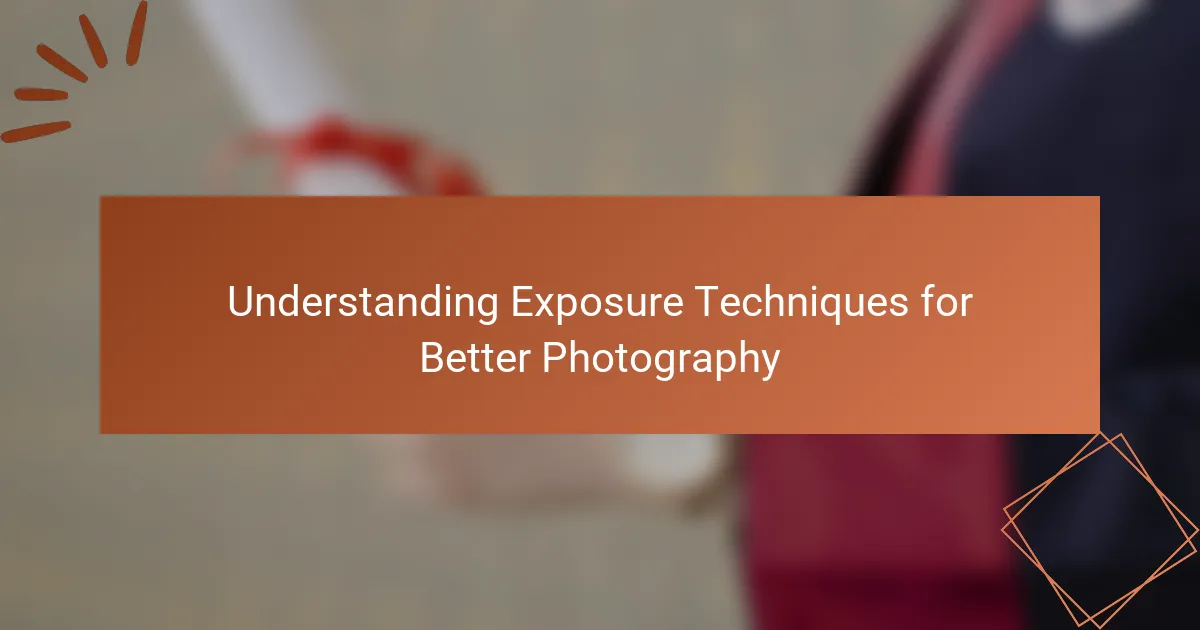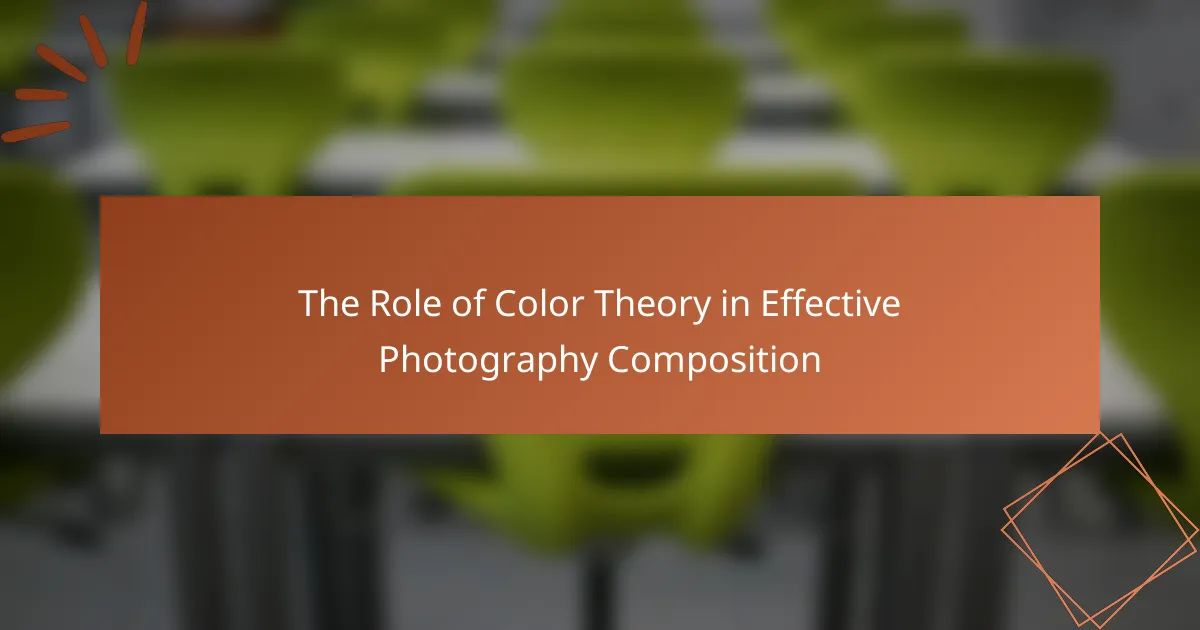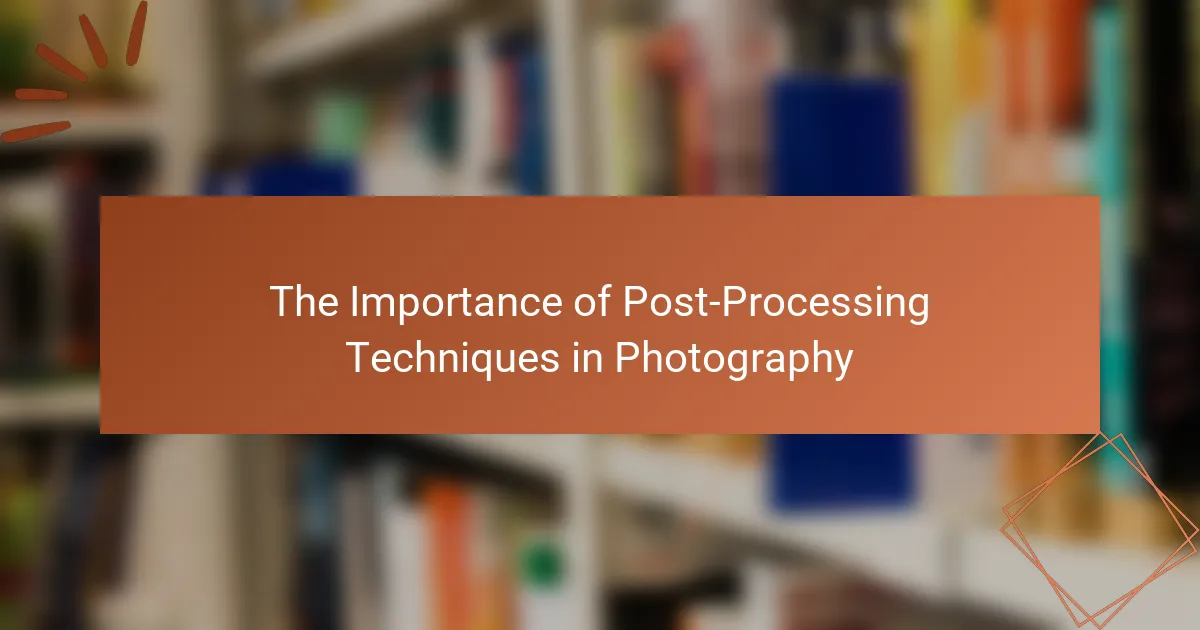Capturing motion in photography is centered around key principles such as shutter speed, panning, and composition. Shutter speed controls the duration of light exposure, influencing whether action is frozen or blurred. Panning involves moving the camera with a subject to create a dynamic effect, while composition directs the viewer’s focus and enhances the sense of movement. Techniques like using a fast shutter speed, continuous shooting mode, and a wide aperture are essential for achieving sharp and impactful images. Common challenges include managing motion blur, maintaining focus, and adjusting to lighting conditions, all of which can be addressed with specific strategies to improve dynamic photography outcomes.
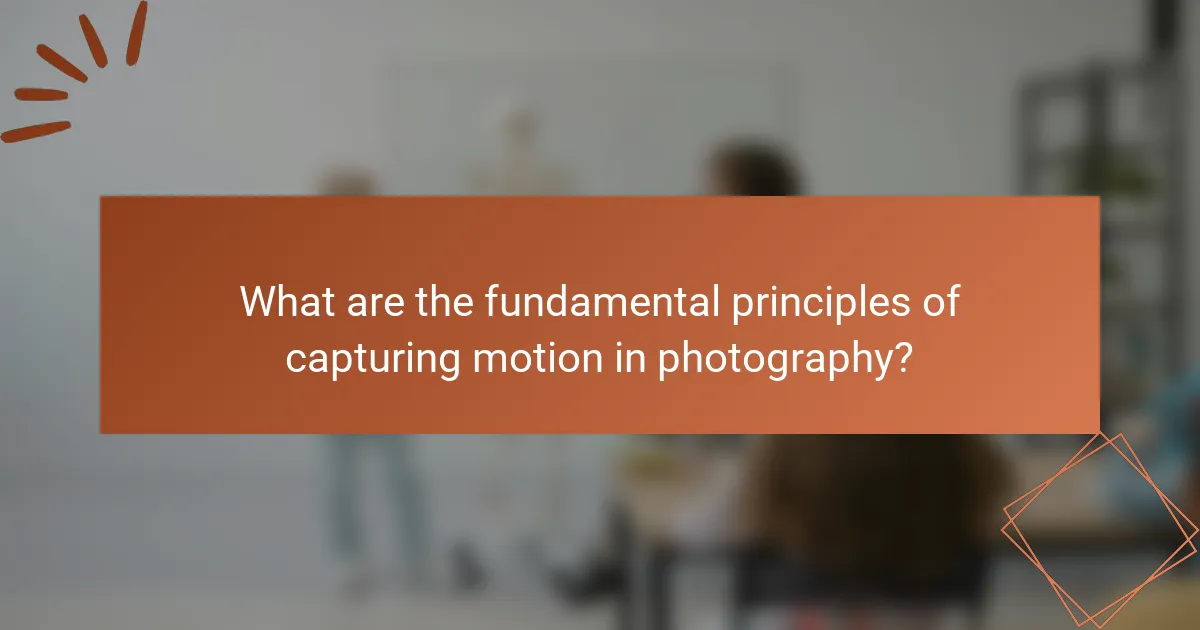
What are the fundamental principles of capturing motion in photography?
The fundamental principles of capturing motion in photography include shutter speed, panning, and composition. Shutter speed determines how long the camera’s sensor is exposed to light. A fast shutter speed freezes action, while a slow shutter speed creates motion blur. Panning involves moving the camera along with a moving subject to maintain focus while blurring the background. Composition is essential for directing the viewer’s eye and enhancing the sense of motion. These principles help photographers effectively convey movement and energy in their images.
How does shutter speed influence the depiction of motion?
Shutter speed directly influences how motion is captured in photography. A fast shutter speed freezes motion, allowing for sharp images of moving subjects. For example, a shutter speed of 1/1000 of a second can capture a bird in flight without blur. Conversely, a slow shutter speed creates motion blur, which can convey a sense of speed or movement. For instance, a shutter speed of 1/30 of a second will blur a running athlete, emphasizing their motion. The choice of shutter speed thus determines whether motion appears crisp or fluid in the final image.
What shutter speed settings are optimal for freezing action?
Optimal shutter speed settings for freezing action typically range from 1/500 to 1/2000 of a second. These settings effectively capture fast-moving subjects without motion blur. For example, sports photography often employs 1/1000 second to freeze athletes in motion. Wildlife photographers may use similar speeds to capture birds in flight. The faster the shutter speed, the more likely it is to freeze action. In bright lighting conditions, higher shutter speeds are achievable. Conversely, lower light may require adjustments to ISO or aperture.
How can slower shutter speeds create a sense of motion?
Slower shutter speeds create a sense of motion by allowing more light to hit the sensor over a longer period. This extended exposure captures the movement of subjects within the frame. As a result, moving elements appear blurred, while static parts remain sharp. This contrast emphasizes the direction and speed of motion. For example, a car racing past will show a streak of light, indicating velocity. Studies in photography demonstrate that shutter speeds of 1/30 seconds or slower effectively convey motion. This technique is widely used in sports and action photography to enhance dynamic scenes.
What role does aperture play in dynamic photography?
Aperture plays a crucial role in dynamic photography by controlling the amount of light entering the camera. A wider aperture (lower f-stop number) allows more light, which is essential for capturing fast-moving subjects in low-light conditions. This enables faster shutter speeds, reducing motion blur. Conversely, a narrower aperture (higher f-stop number) limits light, which can result in slower shutter speeds and increased motion blur. The choice of aperture also affects depth of field, influencing how much of the scene is in focus. A shallow depth of field isolates the subject, enhancing the sense of motion. In contrast, a deeper depth of field keeps more elements in focus, which can also convey movement. Thus, the aperture setting directly impacts exposure, motion capture, and the overall aesthetic of dynamic photographs.
How does aperture affect depth of field in motion shots?
Aperture directly affects depth of field in motion shots. A larger aperture (smaller f-number) results in a shallower depth of field. This can create a blurred background, isolating the subject in focus. Conversely, a smaller aperture (larger f-number) increases depth of field. This keeps more of the scene in focus, which can be useful for capturing dynamic environments. The choice of aperture impacts how motion is perceived in the image. For example, a shallow depth of field can enhance the sense of speed. In contrast, a deeper depth of field can provide context to the motion by showing more of the surroundings.
What are the best aperture settings for capturing fast-moving subjects?
The best aperture settings for capturing fast-moving subjects typically range from f/2.8 to f/5.6. These settings allow for a faster shutter speed, which is essential for freezing motion. A wider aperture, like f/2.8, lets in more light, enabling quicker exposures. This is crucial in dynamic environments where subjects are moving rapidly. Additionally, using these aperture settings helps achieve a shallow depth of field. This effect isolates the subject from the background, enhancing focus on the action. Many professional photographers recommend these settings based on their effectiveness in sports and wildlife photography.
How does ISO sensitivity impact motion capture?
ISO sensitivity directly impacts motion capture by affecting the camera’s ability to record clear images in varying light conditions. Higher ISO settings increase the camera’s sensitivity to light, allowing for faster shutter speeds. Faster shutter speeds are crucial for freezing motion and reducing motion blur in dynamic photography. Conversely, lower ISO settings result in less sensitivity, requiring longer exposure times which can lead to blurred images in fast-moving scenarios. Additionally, higher ISO can introduce noise, which may degrade image quality. Therefore, balancing ISO with shutter speed and aperture is essential for optimal motion capture results.
What ISO settings work best in varying lighting conditions?
In bright lighting conditions, an ISO setting of 100 to 200 works best. This minimizes noise and maintains image clarity. In moderate lighting, such as during sunrise or sunset, an ISO of 400 to 800 is effective. This range balances sensitivity and image quality. In low-light conditions, an ISO of 1600 to 3200 is recommended. Higher ISO settings allow for faster shutter speeds, reducing motion blur. However, using ISO above 3200 may introduce noticeable noise. The choice of ISO should consider the desired exposure and motion effect.
How does increasing ISO affect image quality when capturing motion?
Increasing ISO can negatively affect image quality when capturing motion. Higher ISO settings introduce more noise into images. Noise is random variations in brightness and color, which can obscure fine details. In motion photography, this noise can distract from the subject. Additionally, higher ISO can reduce dynamic range. This means less detail in highlights and shadows. As a result, images may appear flat or lacking contrast. Therefore, while increasing ISO helps in low light, it compromises overall image quality.
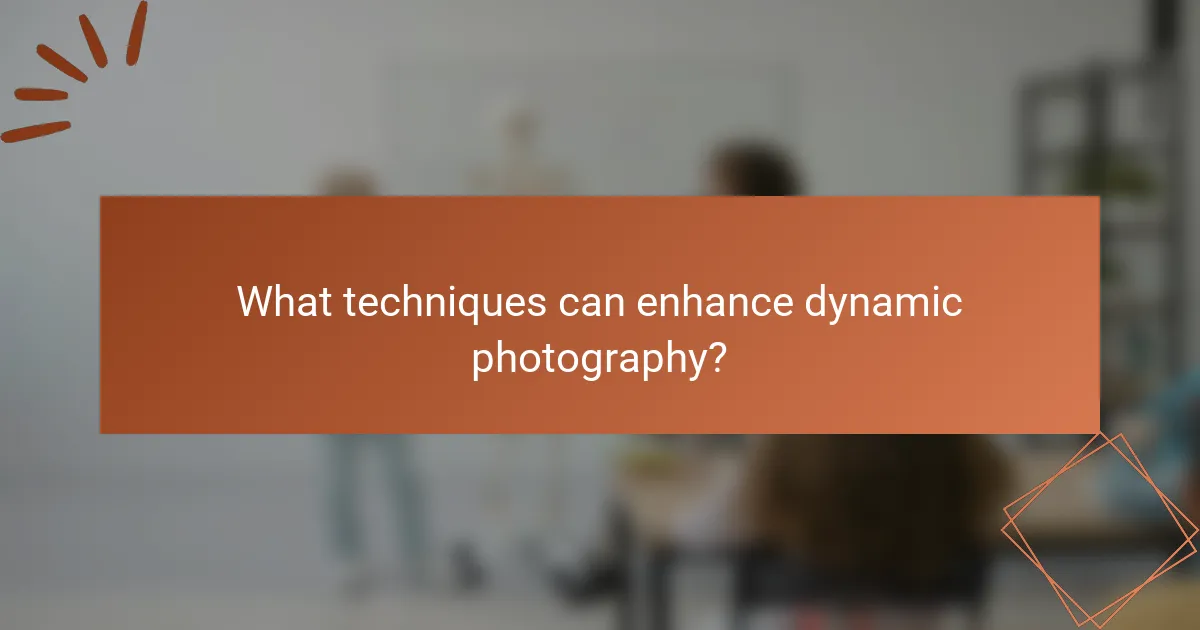
What techniques can enhance dynamic photography?
Techniques that can enhance dynamic photography include using a fast shutter speed, panning, and employing continuous shooting mode. Fast shutter speed freezes motion, capturing sharp images of moving subjects. Panning involves moving the camera along with a moving subject, creating a motion blur effect that emphasizes speed. Continuous shooting mode allows photographers to take multiple shots in quick succession, increasing the chances of capturing the perfect moment. Additionally, using a wide aperture can help isolate subjects against a blurred background. These techniques are widely used by professional photographers to create visually striking images that convey movement and energy.
How can panning techniques create dynamic images?
Panning techniques create dynamic images by capturing motion while keeping the subject in focus. This technique involves moving the camera in sync with a moving subject. The result is a sharp subject against a blurred background. The blur conveys a sense of speed and movement. Panning is commonly used in sports and wildlife photography. It enhances the visual impact of the image. Research shows that images created with panning techniques are perceived as more engaging. This effect occurs because viewers can sense the action and energy in the photograph.
What are the steps to effectively execute a panning shot?
To effectively execute a panning shot, follow these steps. First, select a subject in motion. This could be a moving vehicle or an athlete. Next, choose a slow shutter speed. A shutter speed between 1/30 to 1/125 seconds works well for panning. Then, set your camera to continuous shooting mode. This allows multiple shots to be taken in quick succession.
Position yourself parallel to the subject’s path. This helps maintain focus on the subject during movement. As the subject approaches, track it smoothly with your camera. Start panning before the subject enters the frame and continue until it exits. Finally, review your images to check for sharpness and motion blur.
These steps are supported by photography guidelines that emphasize the importance of motion tracking and shutter speed selection for effective panning shots.
What subjects are best suited for panning photography?
Subjects best suited for panning photography include fast-moving objects. These can be vehicles, athletes, or animals in motion. Panning captures the subject sharply while blurring the background. This technique emphasizes speed and movement. Sports events often provide ideal scenarios for panning. Bicycles, cars, and runners create dynamic compositions. Wildlife photography also benefits from this method. Birds in flight or running animals showcase motion effectively.
What is the significance of framing and composition in motion photography?
Framing and composition are crucial in motion photography. They guide the viewer’s eye and create a sense of movement. Effective framing helps to isolate the subject from distractions. Composition techniques, like the rule of thirds, enhance visual interest. Good composition can convey emotions and narratives. Motion blur can be used creatively to suggest speed. Proper framing and composition can elevate an ordinary shot into a compelling image. Studies show that well-composed images are more engaging to viewers.
How can leading lines enhance the perception of movement?
Leading lines create a visual pathway that guides the viewer’s eye through an image. This technique enhances the perception of movement by directing attention along a specific direction. For example, a road or a river can lead the viewer’s gaze toward a subject, suggesting motion toward that point. Studies in visual perception indicate that lines influence how we interpret spatial relationships in images. When leading lines converge at a vanishing point, they create depth and a sense of progression. This effect can evoke feelings of speed and dynamism. Additionally, the angle and curvature of leading lines can imply different types of movement, such as swift or leisurely. Overall, leading lines are a powerful compositional tool that enhances dynamic storytelling in photography.
What compositional techniques help convey speed and action?
Dynamic composition techniques convey speed and action effectively. Techniques include panning, where the camera moves with a subject, creating motion blur in the background. This method highlights the subject’s speed while maintaining clarity. Another technique is the use of diagonal lines, which naturally suggest movement and direction. Additionally, incorporating leading lines directs the viewer’s eye toward the action. High shutter speeds freeze motion, while low shutter speeds can create intentional blurs to imply fast movement. The placement of the subject within the frame can also enhance the feeling of speed, especially when positioned off-center. These techniques are widely used by photographers to create dynamic images that depict motion.
How does lighting affect motion photography?
Lighting significantly affects motion photography by influencing exposure, contrast, and the perception of movement. Proper lighting enhances the visibility of moving subjects. It allows for faster shutter speeds, which can freeze motion effectively. Conversely, poor lighting can lead to motion blur or underexposed images. The direction and quality of light also shape the mood and depth of the photograph. For instance, backlighting can create silhouettes, while soft lighting can reduce harsh shadows. Understanding these effects helps photographers make informed decisions on settings and techniques.
What are the best lighting conditions for capturing motion?
The best lighting conditions for capturing motion are bright, even lighting. Adequate lighting reduces motion blur and enhances image clarity. Natural light during the golden hour provides soft illumination. High-speed photography often requires flash or studio lights to freeze action. Using a higher ISO setting can compensate for low light but may introduce noise. A fast shutter speed is essential to capture sharp images of moving subjects. Overall, consistent and ample lighting improves the quality of motion photography.
How can artificial lighting be used to enhance dynamic shots?
Artificial lighting enhances dynamic shots by providing controlled illumination that highlights movement. It can create dramatic contrasts and emphasize the subject’s motion. For instance, using directional lighting can cast shadows that accentuate movement. Additionally, colored gels can add mood and depth to the scene. High-speed sync flash can freeze motion, capturing details that might otherwise be lost. Moreover, continuous lights allow for real-time adjustments, helping photographers visualize the effect of light on dynamic subjects. Studies show that well-placed artificial light can significantly improve the visual impact of action shots.
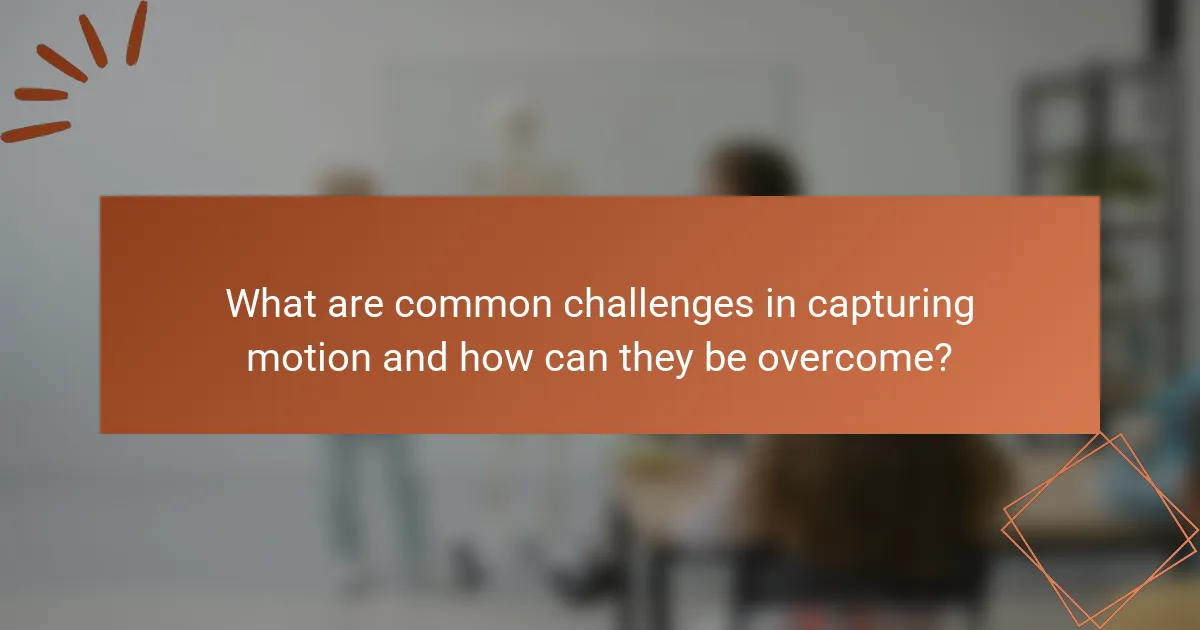
What are common challenges in capturing motion and how can they be overcome?
Common challenges in capturing motion include motion blur, focus issues, and lighting conditions. Motion blur occurs when the subject moves faster than the camera’s shutter speed. To overcome this, use a faster shutter speed to freeze the action. Focus issues arise when the subject moves unpredictably. Continuous autofocus modes can help maintain focus on the subject. Poor lighting can make it difficult to capture sharp images. Using a higher ISO setting or additional lighting can enhance exposure. These strategies help photographers effectively capture dynamic scenes.
What issues arise from motion blur and how can they be addressed?
Motion blur can lead to loss of detail and clarity in photographs. This occurs when the camera or subject moves during exposure. It can result in unwanted artistic effects or a completely unrecognizable image. To address motion blur, photographers can use faster shutter speeds. This technique freezes motion and maintains sharpness. Additionally, using image stabilization can help reduce blur caused by camera shake. Increasing ISO sensitivity can also allow for faster shutter speeds in low light. Lastly, selecting a tripod can provide stability for longer exposures without blur.
How can photographers balance motion blur with sharpness?
Photographers can balance motion blur with sharpness by adjusting shutter speed and aperture settings. A faster shutter speed freezes motion and reduces blur, while a slower speed adds intentional blur for dynamic effect. Using a tripod stabilizes the camera for longer exposures without losing sharpness. Additionally, selecting a wider aperture allows more light, enabling faster shutter speeds. Photographers can also utilize panning techniques, where they move the camera with the subject, creating a sharp subject against a blurred background. This method requires practice to achieve the right balance. The combination of these techniques allows photographers to creatively control motion blur while maintaining sharpness in their images.
What tools can help minimize unwanted blur in motion photography?
Use a fast shutter speed to minimize unwanted blur in motion photography. A shutter speed of 1/500 seconds or faster is often effective for freezing action. Additionally, image stabilization tools, such as gimbals or stabilizers, can help reduce blur during handheld shooting. Tripods also provide stability, allowing for clearer images in dynamic settings. High-quality lenses with wide apertures can capture more light, enabling faster shutter speeds. Lastly, using continuous shooting mode can increase the chances of capturing a clear image during motion. These tools collectively contribute to sharper images in motion photography.
How can photographers tackle low light conditions when capturing motion?
Photographers can tackle low light conditions when capturing motion by using a higher ISO setting. Increasing the ISO allows the camera sensor to become more sensitive to light. This results in brighter images in dark environments. Additionally, photographers should use a wider aperture to allow more light into the lens. A lower f-stop number, such as f/2.8, can help achieve this.
Using image stabilization techniques is also beneficial. This can include stabilizing the camera on a tripod or using lenses with built-in stabilization. Another effective method is to utilize faster shutter speeds to freeze motion. However, this may require compensating with higher ISO or wider apertures.
Finally, photographers can experiment with ambient light sources. Incorporating available light, such as streetlights or neon signs, can enhance the scene. These techniques collectively improve the chances of capturing motion effectively in low light.
What strategies can improve motion capture in dim environments?
Increasing the sensitivity of motion capture systems can improve performance in dim environments. Utilizing higher ISO settings on cameras enhances light sensitivity. This allows for better image quality in low-light conditions. Employing faster shutter speeds reduces motion blur. It captures clearer images of moving subjects. Adding external lighting sources can illuminate the scene effectively. This provides consistent illumination for motion capture. Using specialized motion capture suits with reflective markers enhances tracking accuracy. These markers reflect infrared light, making them visible even in low light. Finally, optimizing the capture software settings can improve tracking algorithms in challenging lighting. This leads to more accurate motion data.
How does using a flash impact motion photography in low light?
Using a flash significantly enhances motion photography in low light. It provides additional illumination, allowing the camera to capture faster shutter speeds. Faster shutter speeds freeze motion more effectively, reducing blur. This technique is particularly useful for subjects in rapid movement. The flash also adds contrast and definition to the subject. This can make dynamic elements stand out against a darker background. Studies show that flash can improve image clarity in low-light settings. Thus, using a flash is essential for achieving sharp motion shots in low light.
What are the best practices for post-processing dynamic images?
Best practices for post-processing dynamic images include ensuring proper exposure adjustments. Adjusting brightness and contrast enhances visibility of motion details. Noise reduction techniques should be applied to maintain image clarity. Utilizing sharpening tools helps to emphasize movement and focus. Color correction is essential for accurate representation of dynamic scenes. Cropping can improve composition by removing distracting elements. Layering techniques allow for selective adjustments to specific areas. Finally, exporting in high-resolution formats preserves quality for various uses.
How can editing software enhance motion effects in photography?
Editing software can enhance motion effects in photography by allowing adjustments to blur, speed, and layering. It enables photographers to create the illusion of movement through motion blur effects. This effect can be applied selectively to emphasize specific elements in the image. Additionally, editing software can manipulate the speed of motion, making subjects appear faster or slower. Layering multiple images can also create dynamic compositions that capture the essence of motion. Tools like Adobe Photoshop and Lightroom provide features for these enhancements. Studies show that images with motion effects can increase viewer engagement by up to 60%.
What common mistakes should be avoided during post-processing of motion shots?
Common mistakes to avoid during post-processing of motion shots include over-sharpening the image. Over-sharpening can create unnatural edges and artifacts. It is essential to maintain a balance to preserve the motion’s fluidity. Additionally, neglecting to adjust the exposure can lead to loss of detail in highlights or shadows. Proper exposure adjustments are crucial for dynamic images. Another mistake is applying excessive noise reduction. This can result in a loss of texture and detail, which are important in motion photography. Lastly, failing to consider color grading can affect the overall mood and impact of the image. Thoughtful color adjustments enhance the visual storytelling in motion shots.
What practical tips can improve dynamic photography skills?
To improve dynamic photography skills, practice panning to capture motion effectively. This technique involves moving the camera along with a moving subject, helping to create a sense of speed. Use a slower shutter speed to blur the background while keeping the subject sharp.
Experiment with different angles to find the most dynamic compositions. Low angles can create a more dramatic effect. Adjust your camera settings for optimal results. A higher ISO can help in low light conditions while maintaining fast shutter speeds.
Utilize continuous shooting mode to capture multiple frames in quick succession. This increases the chances of getting the perfect shot. Lastly, study the work of established photographers. Analyzing their techniques can provide valuable insights and inspiration for your own dynamic photography.
Capturing Motion: Techniques for Dynamic Photography focuses on the essential principles of motion capture in photography, including shutter speed, panning, aperture, and ISO sensitivity. The article outlines how these elements influence the depiction of movement, providing optimal settings for freezing action and creating a sense of speed. It also discusses compositional techniques, lighting considerations, and post-processing strategies to enhance dynamic images. Additionally, it addresses common challenges in motion photography and offers practical tips for improving skills in this area.
